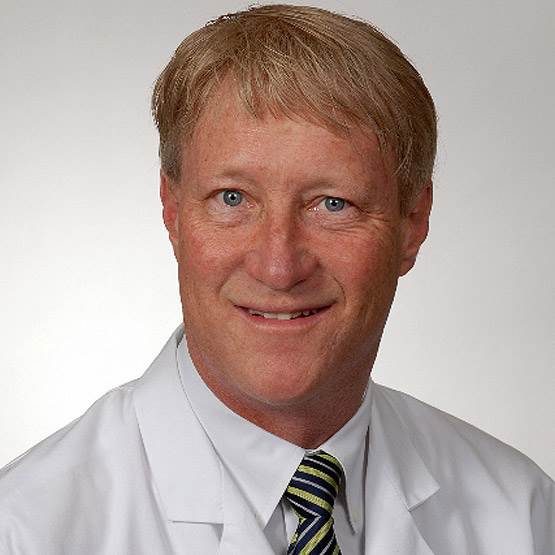Background
Biofilm requires a biofilm specific approach in prevention and treatment. Because biofilm is associated with increasing rates of late onset, recurring, unresponsive, and unexplainable infections including surgical site infections (SSI), targeted antibiofilm therapy should be included in current incision management strategies. Biofilm specific intervention is the next logical addition in the early surgical care continuum for prevention of biofilm related superficial and surgical site infections.
The contributing surgeons to this paper describe in their own words the benefits of using SURGX® to help prevent incisional infectious complications post operatively. SURGX, a proven combination of ingredients with a specific patented formulation, is a sterile gel designed to help reduce superficial surgical site infections (SSSIs) starting in the operating room (OR). Leveraging Next Science’s proprietary XBIO™ technology, SURGX’s unique formulation of four ingredients (citric acid, sodium citrate, benzalkonium chloride, in a polyethylene gel base) creates a pH controlled, high osmolarity environment that deconstructs the biofilm’s protective matrix, destroys planktonic and exposed biofilm sheltered pathogens, and defends against pathogenic recolonization. This exclusive mechanism of action has unparalleled broad-spectrum efficacy against the biofilm’s matrix, gram-positive and gram-negative bacteria, fungi, persister cells, and spores, and has shown a 7-log bacterial colony reduction within 2 minutes.1 The sterile gel prevents surface attachment of free-floating bacteria while the XBIO™ technology eliminates pathogens within the gel. The gel formulation quickly contours to the surgical site and maintains a persistent barrier that can defend against recolonization for up to 5 days.2 SURGX is non-toxic and is compatible with a broad range of dressings providing a protective, non-macerating environment that eliminates even mature multi-organism biofilm and safely facilitates natural healing. In short, SURGX® represents a paradigm shift to biofilm prevention as a key component of intra-operative incision management.
According to a 2019 report by the CDC, more than 2.8 million antibiotic-resistant infections occur in the U.S. each year, and more than 35,000 people die as a result.
Within SSIs are bacteria which spend their existence cycling between two distinct modes of growth, referred to as “planktonic” and “biofilm.” Planktonic bacteria exist as a single celled organism suspended in a liquid such as water or blood. Biofilms form when bacteria adhere to surfaces in a moist environment and form an exceptionally resilient polymicrobial2 community protected by an extracellular polymeric substance (EPS) matrix made by the bacteria.3,4 Confirming in vitro versus in vivo 3,4,11 testing has demonstrated that antimicrobial and antibiofilm are not the same. Products and treatments believed to eradicate bacteria and biofilm have addressed the ability to kill bacteria, but often leave the matrix or matrix micro colonies intact. Without removing the biofilm matrix the
bacteria present a tremendous obstacle for intervention in treating bacterial infection.5
Biofilm has been isolated on prosthetic devices including heart valves, orthopedic hardware, surgical instrument sets, patient skin post-surgical scrub, in-hospital premise plumbing, and other equipment within the hospitals. 3,4 Living tissue and dead materials such as necrotic bone and implants (surgical suture, surgical mesh, prosthetic devices), surgical instruments and equipment provide an avascular substrate to which planktonic bacteria adhere strongly and build their protective EPS matrix.6 Once established within the matrix, microorganisms can increase in numbers, communicate, share DNA, and persist by switching to a dormant state, which renders them relatively non-susceptible to most antibiotics. At best, antimicrobials/antiseptics can be effective against planktonic bacteria7,7a (~10% of the bacteria are planktonic) but have little to no impact on the biofilm EPS (extracellular polymeric substance) matrix which shelters and protects the encased biofilm forming bacteria.7b Bacteria within the biofilm EPS matrix change depending on the assault it is facing from debridement, 8,9,10 and can withstand environmental stresses which is “an important advantage for biofilm survival”.5, 11
Resistance to conventional antimicrobial treatment results from the physical barrier created by an EPS structure begins forming within five minutes of bacterial attachment,12 but also the expression of up to 800 new proteins secreted within hours of attachment/clustering as part of its robust survival defenses.13 Over time, these microorganisms develop superior tolerance and resistance to antibiotics14 and can reactivate following a latent period of many years despite prolonged antimicrobial treatment.15,16 Biofilm eradication with mechanical means, dressings, and antibiotics/antimicrobials alone is virtually impossible, making prevention the best option when facing the choice of prevention versus curing the infection once it has become evident.17 This poses a significant gap in current care modalities and resets the need for a biofilm specific approach in prevention and treatment. Because biofilm is associated with over 80% of healthcare-acquired infections, biofilm may be the cause of many therapeutic failures of current interventions. Effective biofilm-focused intervention is the next logical addition to the surgical care continuum and preventing biofilm associated SSI.
Key Words Non-biofilm SSI, biofilm-based SSI, biofilm, surgical site infection, antibiotic resistance, latent infection, appreciative inquiry, case study observational research, peer-to-peer education, qualitative research.
Introduction
In 2010, over 51.4 million inpatient procedures were performed in nonfederal hospitals in the United States.18 Over two million (~4.5% to 5%) developed a superficial surgical site infection or surgical site infection19 with an economic burden of ~ 0.5% in corresponding annual hospital expenditures.19,20
Despite meticulous operative technique, powerful systemic antibiotics, the latest antimicrobial dressings, and re-tooled operating room processes, eighty percent (80%) or 1.85 million of these SSIs were microbial biofilm infections.21,22 Only in the last few years has science been able to understand that polymicrobial biofilms are pervasive among a growing number of post-surgical wounds and largely a causative factor in surgical site infections.
Surgical infections and their associated cost to treat have motivated change. One such change was published at the end of 2019, when the surgical services director at a large health care system in Virginia realized repeat infections related to colorectal surgeries were rising despite the staff and surgeons’ best efforts in prevention.
The prevention of incisional and surgical site infection is a current topic. In the December 2019 issue of OR Manager[online], the enhanced recovery after surgery (ERAS) program at Virginia Commonwealth University (VCU) Health System in Richmond examined SSI among colorectal cases. During the 10 months prior to the beginning of the evaluation there were 12.26 infections per 100 cases (26 out of 212 colorectal procedures); after implementing a prevention program, VCU reduced SSI during the post-implementation down to 5.04 infections per 100 cases (13 infections out of 258 colorectal procedures).23 The cost of the ERAS program amounted to just over $33.91 per patient, with a per patient savings of $1,533 or $325,000 cost avoidance for the 212 surgeries during the evaluation period. Despite implementation and success of the ERAS program, SSI/SSSI continues to be a complex complication with breakthrough infections that may be biofilm associated.23a
Evidence supports that hospital expenses on SSI prevention will pay off in overall increase of revenue.25
Surgical infections affect every type of surgery and are costly. A study published in 2020, by Shepard et.al., states that current methods of calculating cost benefit models for infection prevention programs use an artificial comparator for costs. In his example, using a daily cost of care, readmissions for infection were ‘less’ costly but only because the cost is spread over an almost double length of stay (26.30 days (24.89, 27.71) versus 5.69 (5.64, 5.74) (P <.001).24 In this retrospective study at Stanford Hospital, the results clearly demonstrated prevention of healthcare-acquired infections (HAI) added
cost for the hospital but generated a much larger increase in revenue, $25,008 and $1,518,682 respectively for all HAI prevented.24 Of the 1,541 HAIs evaluated in the Stanford study, surgical site infection (581 cases) was over one-third of the infections. This evidence supports that hospital expenses on SSI prevention will pay off in overall increase in revenue.25
Objectives
The primary objective of this observational paper was to determine if a topical antibiofilm gel applied directly to the incision site at the time of surgical closure would have a reduction in SSSIs and an observable difference (decreased redness and hypertrophic scar formation) in surgical incisions.
Additional objectives were to increase general understanding of different types of surgical incision management, concerns with the current incision management process, and the rationale behind using a different incision management routine directly on the surgical incision.
Methods
Observations were collected from five prominent orthopedic, podiatric, and plastic surgical practices, from four non-affiliated healthcare systems. Over a ten-month period, between the dates of January 1, 2020 and August 31, 2020, 290 patients underwent a surgical procedure and received SURGX® at the commenting sites. The following specialists observed surgeries ranged from cosmetic breast augmentation and reconstructive surgery, abdominoplasty, podiatric foot and ankle surgeries, and orthopedic joint procedures including total primary hip/knee/shoulder repair. SURGX sterile antimicrobial gel was applied over the incision immediately after closure at the time of surgery.
Observations were noted by the surgeons regarding qualitative healing, ease of use, and cost compared to previous incision management products. Instructions were to apply a thin layer of SURGX to the dry incision line covering the entire length of the incision and over any suture/staple extruding through the skin. Dressings were dry gauze or a non-antimicrobial, non-alginate dressing of choice.
Reported incision management and SSI prevention measures included glues, specialty combination dressings, special sutures and suturing techniques, and silver products. Yet all have continued to see SSSIs, and according to one surgeon, a puzzling 2% increase in SSSI. Because of biofilm’s elusive presentation lacking overt signs or symptoms, the presence of biofilm remains often unrecognized as an important barrier to wound healing that begins within minutes of incision, even in the surgical suite.12 Patients received the Standard of Care for all procedures and processes that the surgeons would normally have used except for intraoperative incision management.
Results
Based on post-operative observations, 0.0% of the 290 patients’ incisions became infected or developed infection related complications. This compares favorably with the historical SSSI rates that ranged from 1.07% for general orthopedic surgeries, 25.8 % for breast surgeries and 3.1% to 28.9% for diabetic foot surgeries.26,27,28
According to one recent interview with Dr. Mark Crispin of Atlanta Georgia, “For breast augmentation/reconstruction surgeons are doing everything reasonable to prevent biofilm formation post-op”. Personally, he has enhanced his surgical procedure with the addition of SURGX® to determine if using a targeted biofilm therapy would protect the suture line, facilitate rapid healing, and lower SSI and capsular contractures.

Board Certified Plastic Surgeon
Dr. Mark Crispin
Atlanta, GA since 1995
Observations:
40 clinical SURGX cases – breast reconstruction, breast augmentation, abdominoplasty
Implemented SURGX:
January 2020
Rationale for Use:
Reduction in biofilm-based SSI
Previous Incision Management Approach:
“I have used glue which I believe frequently traps pathogens under the seal leading to bacterial colonization and seeding biofilm growth which can split sutures; it also flakes off several days post-op creating portals for bacteria and biofilm to infiltrate the incision allowing post-op SSSI; I have used steri-strips as well which often lead to maceration and bacterial colonization/infection; and I also use braided sutures which tend to be vulnerable to pulling bacteria from skin into the suture line causing incisional SSSI and complications.”
Outcomes:
“On the cases I have used SURGX directly after closure, I have had 0% SSSIs; no split sutures on breast and/or abdominal incisions, and 0% complications rate. It is easily applied in OR by the surgical team, the applicator tip is very efficient/clean to use.”
In another series of case observations, Dr. David Stokes, Dr. David Strom and Dr. Jon Minter, Board-Certified Orthopedic Surgeons, and Dr. Matthew Regulski, Surgical Podiatrist, also address this increasing SSI threat in orthopedic cases with the use of SURGX.
Currently in the United States, over 4.7 million patients have undergone a total knee replacement (TKA), with over a million TKA surgeries performed each year.26,29,30 This volume is anticipated to rise to almost 4 million per year by 2030 and affect increasingly younger populations.30 However, individuals who undergo total knee replacements have high risk for complications, including infection, which may not only diminish the benefits of the surgery but may also call for future revision surgeries.31
An 84% increase in hip and knee arthroplasty brightens the future of hospital growth through 2028, anticipating surgical intervention increases for the aging and obese34
An epidemiological study conducted in 2006 found that the most common cause of revision TKAs is unresolving infection, with an incidence of 25.2%.32
Additionally, infection was also cited as the most common indication for prosthesis removal, with a prevalence of 79.1%.33 As such, with the volume of TKAs only forecasted to increase, there must be an anticipated and corresponding shift to battle potential complications from infection. Literature suggests a low rate of infection for orthopedic surgeries, typically 1 per 100 patients, but, with the projections for hip and knee arthroplasties in 2028,34 without intervention for biofilm-based SSI, there may be an associated increase in surgical site infections, and readmissions within 30 days,34a both
of which are damaging to the patients and the reputation of the physician, not to mention revenue negative for the hospital.

Board Certified in Orthopedic Surgery, specializing in Sports Medicine Surgery
Dr. David Stokes
Lawrenceville, GA
Observations:
25 clinical SURGX cases – total shoulder, patella/ femoral head replacement surgeries
Implemented SURGX:
January 2020
Rationale for Use:
Reduction in biofilm-based SSI
Incision Management Approach:
“My incision management typically includes silver, Xeroform, layered tissue sutures, and specialty sutures but I have continued to see 2-3 post-operative SSSI develop [per year].”
“Sporadic SSSI- even though they are few, are very problematic for the patient and surgical practice. I introduced SURGX into my post-operative incision management for the purpose of removing/preventing adhesion of biofilm bacteria in and around the incision and subsequent SSSI complication. Despite my best skin prep, the patient’s skin is frequently colonized with biofilm and [becomes] the source of infecting pathogens.”
Outcomes:
“With the use of SURGX when applied immediately to the incision line post-op I have had 0% SSSI. At one-week follow-up the wound is healing better with no hypertrophic scaring and less redness around the incision.”

Board Certified in Orthopedic Surgery, specializing in Foot and Ankle Surgery
Dr. David Strom
Pinehurst, NC
Observations:
15 clinical SURGX® cases – foot and ankle, surgical debridement
Implemented SURGX:
May 2020
Rationale for Use:
Reduction in biofilm-based SSI
Incision Management Approach:
“My current incision management approach includes betadine surgical prep, Xeroform, Webril, or other sterile gauze, Ace Wraps. In the past 6 months I have seen SSSI rates increase from 1% to 3% with no changes in previous surgical approaches or incision management procedures. With rising post-op SSSI more rapid and complete incision healing is needed especially with patients with high-risk factors for poor healing (advanced age, diabetes, poor perfusion, smoking, poor nutritional status, etc.).”
Outcomes:
“Out of 15 cases where SURGX was applied immediately post-op, I have had 0% SSSI. Notably, there is one patient with a non-healing Achilles Tendon incision site, unresponsive to 17 weeks in the Standard of Care Wound Care who healed completely within 2 weeks of starting SURGX.”

Orthopedic Specialist, board-certified physician in orthopedic surgery who who specializes in advanced, innovative surgical management of hip and knee arthritis
Dr. Jon Minter
Northside Hospital in Atlanta, GA
Observations:
10 clinical SURGX cases – Primary and revision total hip/knee arthroplasty
Implemented SURGX:
May 2020
Rationale for Use:
Reduction in biofilm-based SSI
Incision Management Approach:
“While infections rates are generally low for arthroplasty, the occasional infection can be costly, ranging to over $90,000 for a single failed knee arthroplasty. I have recognized that SSIs are becoming more frequent, even with every effort I make to prevent infections. I had been using glue
anti-microbial sealant that has unfortunately been inconsistent with results (infection site avoidance), and takes upwards of four extra OR minutes ‘which seems like forever’ and at the end of a procedure generally cover the incision with a silver dressing that is also costly.”
Outcomes:
“Since beginning SURGX, I have had no incisional complications, any incision site treated with SURGX after development of a post-operative infection responded rapidly with less drainage/inflammation. It most recently cleaned up a poorly healing inflamed biopsy site well enough to be able to re-operate and proceed within days for a planned revision total knee replacement. Periodic reviews of wound have taken place following the use of SURGX and I have not observed any negative effects on healing on what were some multiply operated knees in particular. We will be converting to a non-silver dressing in light of these very positive results thus far.”

Podiatric Surgery Specialist
Dr. Matthew Regulski
Toms River, NJ
Observations:
200+ clinical SURGX cases – foot and ankle surgery, lower leg surgery
Implemented SURGX:
January 2020
Rationale for Use:
Reduce infection related complications, incisional dehiscence
Incision Management Approach:
“My incision management is driven by the fact that virtually 100% of diabetic foot ulcers have biofilm. In the past I have used betadine-soaked Adaptec or 4×4 gauze with the excess squeezed out hoping to avoid biofilm infections. It was worrisome since betadine impedes healing and has no impact on biofilm.”
Outcomes:
“Patients during the pandemic were slow to seek care or didn’t come in for care at all. Because of this, the recent case load has been high, with a much higher level of complexity from letting the wound go and their corresponding medical conditions. Most patients have severe diabetic and vascular disease that was compounded by delayed care. Since beginning SURGX, I have had no infection complications and only one incisional complication in a patient that dehisced their incision from walking without their off-loading boot. In my experience any incision site treated with SURGX has not developed the typical surgical infection complications.”
Disclaimer:
Dr. Matthew Regulski serves as Medical Director for Next Science but maintains independence in his private practice and is not provided complimentary product for his daily practice.
Discussion
Surgical site infections that occur in or near a surgical incision substantially impact patient morbidity and mortality and is the most common healthcare-acquired infection.35 While surgical site infection interventions have a price tag, if they work, they can be extremely cost effective and provide an immediate solution for surgical incision management. Many current hospital intervention programs have been successful at reducing post-operative complications, even reducing non-biofilm related surgical site infection. However, the data still indicates that surgery related infection rates remain one of the costliest events for hospitals, are increasing, and are increasingly related to biofilm. 24,35
Neutralizing the threat of biofilm infections in wounds, including surgical incisions, requires specific methods to address the high prevalence of biofilm producing bacteria on the patient and in the surgical environment and destroy the pathogenic matrix defense. Processes have been in place to limit the complications faced by surgical patients but SSSI continue. Although these testimonies are limited, the outcomes clearly demonstrate that superficial surgical site infections can be reduced using an antibiofilm topical gel applied safely and confidently directly on the incision.
Conclusions
Collectively, the data shows that the burden of SSI from biofilms will continue to escalate and suggests that avoidance through prevention is the optimal choice to reduce hospital costs and improve patient outcomes.32-37 In an article from Infection Control and Hospital Epidemiology, 2018, “without a reduction in SSI rates, we project an increase in complex SSIs following hip and knee arthroplasty of 14% between 2020 and 2030,” which is up from the current anticipated 1% rate to 2.5% annually and suggests there must be compliance with a lofty goal of reducing SSI by 30%.37,38 These projections for biofilm-based infections underscore the need for a renewed focus on early intervention and prevention.
Patients treated with SURGX® Sterile Antimicrobial Gel on the surgical incision in the OR reportedly did not develop SSSI, had less hypertrophic scar development and redness around the incision. In the opinion of these surgeons, SURGX is more cost effective and less cumbersome to use than their previous incision management processes.
References
1. Laboratory Data on File – Next Science Limited SURGX One-Pager Graph.
2. Miller KG, et al. (2014). Next Science Wound Gel Technology, a Novel Agent That Inhibits Biofilm Development by Gram-Positive and Gram-Negative Wound Pathogens Antimicrobial Agents and Chemotherapy 58(6): 3060–3072.
3. Lebeaux, D. C. (2013, May 13). From in vitro to in vivo models of bacterial biofilm-related infections. Pathogens 2(2), pp. 288-356. https://www.mdpi.com/2076-0817/2/2/288
4. Bédard, E., et al. (2016). Pseudomonas aeruginosa in premise plumbing of large buildings. Microbiology Open, 5(6), 937–956. https://doi.org/10.1002/mbo3.391
5. Gebreyohannes, G., Nyerere, A., Bii, C., & Sbhatu, D. B. (2019). Challenges of intervention, treatment, and antibiotic resistance of biofilm-forming microorganisms. Heliyon, 5(8), e02192. https://doi.org/10.1016/j.heliyon.2019.e02192
6. Barker J C. (2017). A formidable foe is sabotaging your results: what you should know about biofilms and wound healing. Plast Reconstr Surg.139(05):1184e–1194e.
7. Malone M, (2016). Approaches to biofilm-associated infections: the need for standardized biofilm methods for medically relevant clinical applications. Expert Rev Anti Infect Ther. 2016; in press.
7a. Petrova, O.S. (2012). Sticky situations: key components that control bacterial surface attachment. Journal of Bacteriology 194(10) May, 2413-2425. https://jb.asm.org/content/194/10/2413
7b. Hall-Stoodley, L. Stoodley, P. (2005). Biofilm formation and dispersal and the transmission of human pathogens. Trends Microbiology 13(1), 7-10. https://www.cell.com/trends/microbiology/fulltext/S0966-842X(04)00258-6?_returnURL=https%3A%2F%2Flinkinghub.elsevier. com%2Fretrieve%2Fpii%2FS0966842X04002586%3Fshowall%3Dtrue
8. Kim P, A. C. (2018). Clinic-based debridement of chronic ulcers has minimal impact on bacteria. Wounds 30(5), 114-119.
9. Metcalf DG, Bowler PG. (2013). Biofilm delays wound healing: A review of the evidence. Burns &Trauma 1(1):5-12. doi:10.4103/2321-3868.113329
10. Hannigan GD, P. N. (2015). Current concepts and ongoing research in the prevention and treatment of open fracture infections. Advances in Wound Care 4(1), 59-74.
11. Yin, W., Wang, Y., Liu, L., & He, J. (2019). Biofilms: The Microbial “Protective Clothing” in Extreme Environments. International journal of molecular sciences, 20(14), 3423. https://doi.org/10.3390/ijms20143423
12. Masako K, et al. (2005 Jan 21). A novel method to control the balance of skin microflora. Part 1: Attack on biofilm of Staphylococcus aureus without antibiotics. Journal of Dermatological Science. 38; 197-205 https://doi.org/10.1016/j.jdermsci.2005.01.003
13. Sauer K, et al. (2002). Pseudomonas aeruginosa Displays multiple phenotypes during development as a biofilm. J Bacteriol.184(4):1140-1154. doi:10.1128/JB.184.4.1140
14. Windels EM, Michiels et al. (2019 Sep). Antibiotics: Combatting Tolerance to Stop Resistance. mBio 10(5) e02095-19; DOI: 10.1128/mBio.02095-19
15. Libraty D H, (2012). Staphylococcus aureus reactivation osteomyelitis after 75 years. N England J Med. 366(05):481–482.
16. Sendi P, Meier R, et al. (2014). Reactivated Moraxella osteitis presenting as granulomatous disease. Neth J Med. 72(09):491–493.
17. Di Domenico, E. Get al. (2017). Biofilm is a Major Virulence Determinant in Bacterial Colonization of Chronic Skin Ulcers Independently from the Multidrug Resistant Phenotype. International Journal of Molecular Sciences 18(5), 1077. http://doi.org/10.3390/ijms18051077
18. Centers for Disease Control and Prevention (CDC), NCCHS. National Hospital Discharge Survey: 2010 Table, Procedures by Selected Patient Characteristics – Number by Procedure Category and Age. Atlanta, GA: CDC; 2010. Available at http://www.cdc.gov/nchs/nhds/nhds_tables.htm. Last accessed August 2020
19. Shepard J, Ward W, Milstone A, et al. (2013). Financial Impact of Surgical Site Infections on Hospitals: The Hospital Management Perspective. JAMA Surg.148(10):907–914. doi:10.1001/jamasurg.2013.2246
20. Fry DE. The economic costs of surgical site infection. Surg Infect (Larchmt) 2002;3 Suppl 1:S37–S43
21. Kathju, S., et al. (2014). Bacterial biofilms on implanted suture material are a cause of surgical site infection. Surgical infections,15(5), 592–600. https://doi.org/10.1089/sur.2013.016
22. Edmiston, C. E., Jr, McBain, A. J., Roberts, C., & Leaper, D. (2015). Clinical and microbiological aspects of biofilm-associated surgical site infections. Advances in experimental medicine and biology, 830, 47–67. https://doi.org/10.1007/978-3-319-11038-7_3
23. Spencer, P. (2019, Dec 17). Providing cost-benefit analysis for ERAS-related solutions. OR Manager online. Accessed August 10, 2020. https://www.ormanager.com/providing-cost-benefit-analysis-eras-related-solutions/
23a. Percival, S. (2017). Importance of biofilm formation in surgical infection. BJS 104, e85 – e94. https://onlinelibrary.wiley.com/doi/epdf/10.1002/bjs.10433
24. Shepard J, F. B. (2020). Could the prevention of health care-associated infections increase hospital cost? The financial impact of health care-associated infections from a hospital management perspective. American Journal of Infection Control 48(3), 255.260.
25. Al-Mulhim, F. A., Baragbah, M. A., Sadat-Ali, M., Alomran, A. S., & Azam, M. Q. (2014). Prevalence of surgical site infection in orthopedic surgery: a 5-year analysis. International surgery, 99(3), 264–268. https://doi.org/10.9738/INTSURG-D-13-00251.1
26. Vilar-Compte, et al. (2004). Surgical site infections in breast surgery: case-control study. World journal of surgery, 28(3), 242–246. https://doi.org/10.1007/s00268-003-7193-3
27. Wukich, D. K., et al. (2014). Neuropathy and poorly controlled diabetes increase the rate of surgical site infection after foot and ankle surgery. The Journal of Bone And Joint Surgery. American volume, 96(10), 832–839. https://doi. org/10.2106/JBJS.L.01302
28. Wukich, D. K., Dikis, J. W., Monaco, S. J., Strannigan, K., Suder, N. C., & Rosario, B. L. (2015). Topically Applied Vancomycin Powder Reduces the Rate of Surgical Site Infection in Diabetic Patients Undergoing Foot and Ankle Surgery. Foot & ankle international, 36(9), 1017–1024. https://doi.org/10.1177/1071100715586567
29. Steiner C, Andrews R, Barrett M, Weiss A. HCUP Projections: Mobility/Orthopedic Procedures 2003 to 2012. HCUP Projections Report # 2012-03. 2012 Sep 20. U.S. Agency for Healthcare Research and Quality. http://hcup-us.ahrq.gov/reports/projections/2012-03.pdf. Accessed 2015 May 27. [Ref list]
30. Etkin C. D., Springer B. D. (2017). The American Joint Replacement Registry: The first 5 years. Arthroplasty Today, 3(2), 67-69. 10.1016/j.artd.2017.002 [Context Link]
31. Weinstein, A. M., et al. (2013). Estimating the burden of total knee replacement in the United States.
The Journal of Bone And Joint Surgery. American volume, 95(5), 385–392. https://doi.org/10.2106/JBJS.L.00206
32. Pitta, M., Esposito, C. I., Li, Z., Lee, Y. Y., Wright, T. M., & Padgett, D. E. (2018). Failure After Modern Total Knee Arthroplasty: A Prospective Study of 18,065 Knees. The Journal of arthroplasty, 33(2), 407–414. https://doi.org/10.1016/j.arth.2017.09.041
33. Bozic, K.J., Kurtz, S.M., Lau, E. et al. (2010). The Epidemiology of Revision Total Knee in the United States. Clin Orthop Relat Res 468, 45–51. https://doi.org/10.1007/s11999-009-0945-0
34. Olderog, A (2019, May). Accommodating Complex Ortho Cases: Focus on fundamentals and communicate.
The ASCA Journal. Accessed August 20,2020. ascfocus.org https://www.sg2.com/wp-content/uploads/2019/05/ASC-Focus_May-2019_Olderog.pdf
35. Lalonde, S., & Wood, G. C. (2019). Short stay total joint arthroplasty program: patient factors predicting readmission. Canadian journal of surgery. Journal Canadien De Chirurgie, 62(3), 1–7. Advance online publication. https://doi.org/10.1503/cjs.009218. Accessed August 12, 2020
36. Percival, S. L., McCarty, S. M., & Lipsky, B. (2015). Biofilms and Wounds: An Overview of the evidence. Advances in Wound Care, 4(7), 373–381. https://doi.org/10.1089/wound.2014.0557
37. Wolford, H. M., Hatfield, K. M et al. (2018). The projected burden of complex surgical site infections following hip and knee arthroplasties in adults in the United States, 2020 through 2030. Infection Control and Hospital Epidemiology, 39(10), 1189–1195. https://doi.org/10.1017/ice.2018.184
38. Mistry JB, Naqvi A, et al. (2017, Nov). Decreasing the Incidence of Surgical-Site Infections After Total Joint Arthroplasty. American Journal of Orthopedics (Belle Mead, N.J.) 46(6): E374-E387
Inset:
CDC data: https://www.cdc.gov/drugresistance/biggest-threats.html
This material is intended for health care professionals. For product indications, contraindications, warnings, precautions, potential adverse effects and patient counselling information, see the package insert or contact your local representative; visit www.nextscience.com for additional product information.
This product may not be available in all regions; check for country product clearances and reference product specific instructions for use. All content herein is protected by copyright, trademarks and other intellectual property rights, as applicable, owned by or licensed to Next Science or its affiliates unless otherwise indicated, and must not be redistributed, duplicated or disclosed, in whole or in part, without the express written consent of Next Science.
All product names are the property of their respective owners.
SURGX and XBIO are trademarks of Next Science IP Holdings Pty Ltd. ©2021
